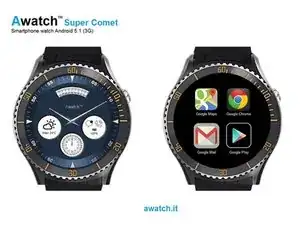Android Smartwatches
General
Wear OS, previously called Android Wear, is an operating system developed by Google, specifically tailored for smartwatches and other wearable devices. It provides a range of features and applications that seamlessly integrate with the user's smartphone, enhancing the smartwatch experience. Wear OS supports various connectivity options and offers different watch face styles, accommodating diverse user preferences.
Background
Wear OS was initially announced on March 18, 2014, alongside the introduction of a developer preview. At the time, several renowned companies, including Motorola, Samsung, LG, HTC, and Asus, were announced as partners in the venture. The first wave of Android Wear smartwatches, namely the Samsung Gear Live and LG G Watch, were launched on June 25, 2014. Soon after, the Motorola Moto 360 hit the market on September 5, 2014.
Significant updates and enhancements have been made to Wear OS since its inception. In December 2014, an update was rolled out, incorporating new features such as a watch face API and transitioning the software to be based on Android 5.0 "Lollipop." The subsequent release of smartwatches included devices from manufacturers like Asus, Sony, and Huawei.
Google expanded Wear OS's compatibility in August 2015 with the introduction of an app for iOS, enabling limited support for receiving notifications on Wear OS smartwatches. The platform underwent a rebranding in March 2018, changing its name from Android Wear to Wear OS to better reflect its technology and vision. Later in September 2018, Google introduced Wear OS 2.0, which introduced a personalized Google feed, improved fitness tracking, and a redesigned notification area. In November 2018, the underlying platform of Wear OS was upgraded to a version of Android Pie.
In January 2021, Google finalized its acquisition of Fitbit, expressing its commitment to invest more in Wear OS and introduce wearable devices under the Made by Google brand. Subsequently, at Google I/O in May 2021, Google unveiled Wear OS 3.0, featuring a refreshed visual design inspired by Android 12 and integrating Fitbit's exercise tracking capabilities. Google also partnered with Samsung to merge its Tizen-based smartwatch platform with Wear OS, ensuring future Samsung smartwatches will utilize Wear OS. The underlying codebase of Wear OS was upgraded to Android 11 to align with the latest Android version.
Wear OS offers seamless synchronization of notifications, voice control via the "OK Google" hotword, and gesture-based input. It integrates with various Google services such as Google Assistant, Gmail, Maps, and Wallet. Additionally, Wear OS supports third-party watch apps available through the Play Store. The platform also includes fitness tracking features through Google Fit and other compatible applications, enabling users to track their physical activities. Media control for paired devices is another notable functionality provided by Wear OS, enhancing the entertainment experience.






